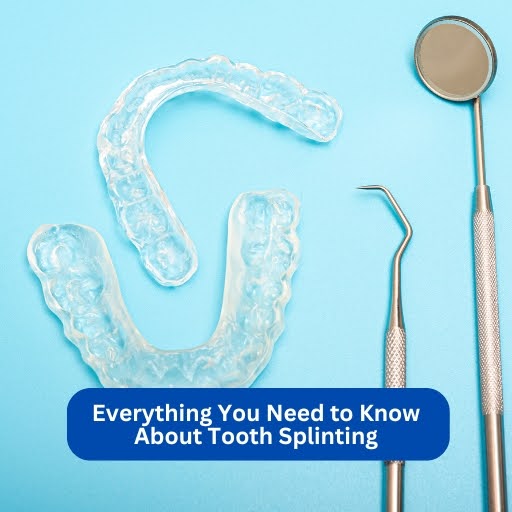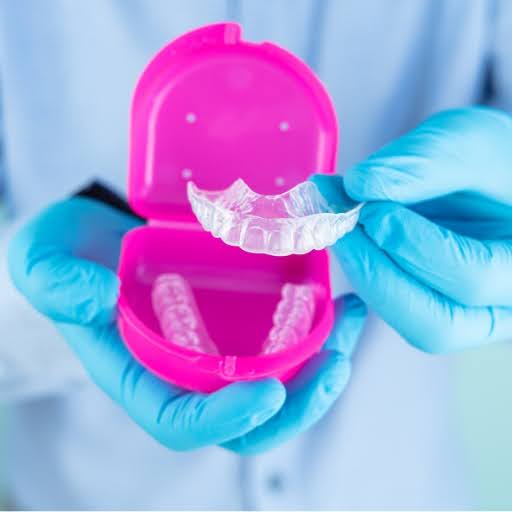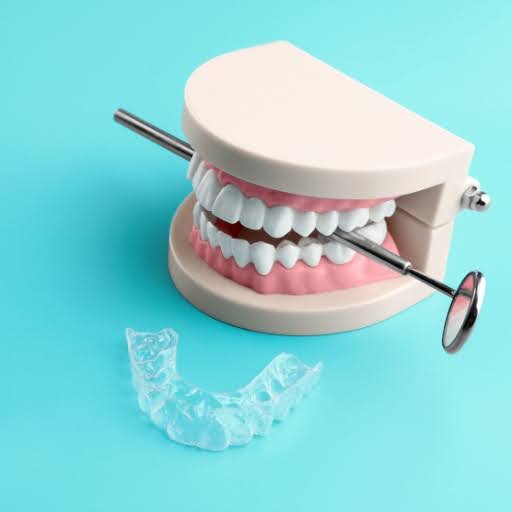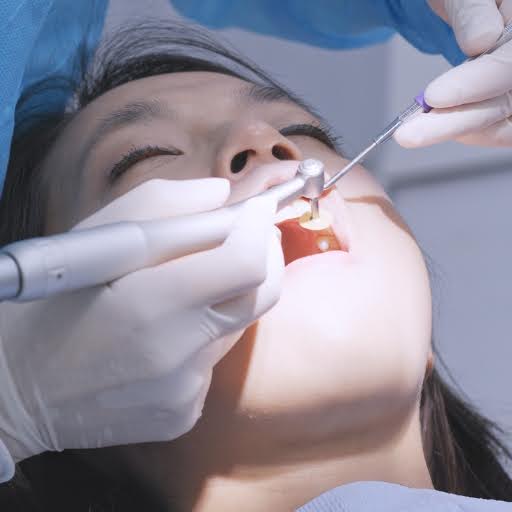Introduction
Tooth splinting is an important dental procedure that helps keep loose or damaged teeth stable. If your teeth are loose because of an injury, gum disease, or other problems, tooth splinting can be very helpful. This guide will explain what tooth splinting is, why it’s important, the different types of splints, how the procedure is done, how to take care of your teeth afterward, and answer some common questions about it.

Summary
2. Why Tooth Splinting is Important
4. The Tooth Splinting Procedure
1. What is Tooth Splinting?

Tooth splinting is a dental method where a splint is used to keep loose or damaged teeth stable. The main goal is to support the affected teeth so they can heal and prevent them from moving or getting damaged further. This is important for both the health of the tooth and the surrounding gum tissue.
Purpose and Benefits
Tooth splinting’s main goal is to keep damaged teeth in place while they heal. This is especially important if the teeth have been knocked loose or shifted due to an injury. Stabilizing the teeth can help reduce pain, improve how you use your mouth, and stop further damage.
Tooth splinting is also useful for gum disease. If gum disease has caused a loss of bone around the teeth, splinting can help keep the teeth stable and prevent them from moving or falling out.
2. Why Tooth Splinting is Important

Tooth splinting is very important in dental care for several reasons. One major benefit is that it helps stabilize loose or damaged teeth, easing pain and making eating and speaking easier. Loose teeth can be challenging, but splinting provides the support needed to get things back to normal.
Additionally, tooth splinting protects affected teeth from further damage. By keeping the teeth in place, splinting reduces the chance of more injuries or problems, helping the teeth stay stable as they heal.For patients with gum disease, splinting is especially crucial. Gum disease can weaken the teeth’s support structures, making them more likely to move. Splinting helps stop the disease from getting worse and supports the overall health of your mouth.
3. Types of Tooth Splints

Tooth splints come in different types, each meant for specific needs. The two main types are fixed splints and removable splints.
Fixed Splints
Fixed splints are permanently attached to the teeth with special dental materials. They are usually made from metal or composite materials and are used for long-term support. This type is best for situations where teeth need extended help, such as after serious injuries or severe gum disease.
Fixed splints are strong and provide steady support throughout the healing process. They are used when long-term stability is needed for the teeth.
Removable Splints
Removable splints, as the name suggests, can be taken out by the patient. These splints are often made from acrylic or plastic and are meant for short-term use. They are commonly used for minor injuries or as a temporary fix before a more permanent treatment.
Removable splints are easier to clean and maintain since patients can take them out for brushing and other oral care. They are used when a less invasive solution is suitable.
4. The Tooth Splinting Procedure

Knowing the tooth splinting process helps you get ready for the treatment. The procedure usually includes several steps, from the first visit to getting the splint applied.
Initial Consultation
The first step is to have a thorough consultation with your dentist. During the visit, the dentist will examine your teeth and may take X-rays to see how much damage there is. This helps decide the best treatment and the right type of splint for your needs.
Preparation and Application
After choosing the right splint, the dentist will prepare your teeth. For fixed splints, this means cleaning your teeth and applying a bonding material to attach the splint securely. The dentist will then place the splint and adjust it to fit properly.For removable splints, the dentist will take impressions of your teeth to make a custom-fit splint. The splint is then made and adjusted to be comfortable and effective. This type of splint fits snugly and can be easily removed and put back in by you.
5. Post-Procedure Care

After the tooth splinting procedure, it’s important to follow care instructions to ensure the best results and support healing.
Immediate Aftercare
Right after the splint is applied, you might feel some discomfort or sensitivity. This is normal and should get better over time. Your dentist will give you tips on how to manage any discomfort and make sure the splint stays in place.
Long-Term Maintenance
To keep your teeth and the splint in good condition, you need to take good care of them. Your dentist will provide advice on how to clean both the splint and your teeth properly. Following these guidelines is important to avoid problems and make sure the splint continues to support your teeth.
Regular follow-up appointments with your dentist are also essential. During these visits, your dentist will check on your healing progress and make any needed adjustments to the splint. This ongoing care helps fix any issues quickly and ensures the treatment is working well.
FAQs
Q.1 How long does the tooth splinting procedure take?
A.1. The procedure typically takes between 30 minutes to an hour, depending on the complexity of the case and the type of splint used. Your dentist will provide an estimate based on your specific situation.
Q.2. Is the procedure painful?
A.2. Most patients experience minimal pain due to the use of local anesthesia. Any discomfort after the procedure can usually be managed with over-the-counter pain relievers. Your dentist will guide you on how to handle any discomfort effectively.
Q.3. Can I eat normally with a tooth splint?
A.3. While you can eat with a splint, it is advisable to avoid hard, sticky, or chewy foods that could damage the splint or put additional stress on your teeth. Your dentist will give you specific dietary advice to help protect the splint and your teeth.
Q.4. How long will I need to wear the splint?
A.4. The duration for wearing a splint varies based on the severity of your condition and your dentist’s recommendations. It can range from a few weeks to several months, depending on the healing process and the type of splint used.
Q.5. Will tooth splinting solve the problem permanently?
A.5. Tooth splinting helps stabilize the teeth but may not address the underlying issue entirely. Additional treatments or interventions may be required to fully resolve the problem. Your dentist will provide guidance on any further steps needed for complete resolution.
Conclusion
Tooth splinting is a vital procedure for stabilizing loose or damaged teeth and promoting proper healing. By understanding the procedure, types, and care involved, you can make informed decisions about your dental health. Following your dentist’s recommendations and attending regular check-ups will help ensure the best outcomes and maintain your oral health.
If you have any questions or concerns about tooth splinting, consult your dentist for personalized advice and support. Your dentist can provide additional information and help you navigate the treatment process effectively.For personalized assistance or to schedule a consultation, please contact our dedicated team at (267) 908-4867 or visit our website at https://premierperiodonticspa.com/contact-us/. Your smile is our top priority, and we are committed to providing the guidance and support you need for a comfortable and successful dental experience. Trust us to focus on your oral health and work with you towards a vibrant and healthy smile. We look forward to helping you achieve your oral health goals.









